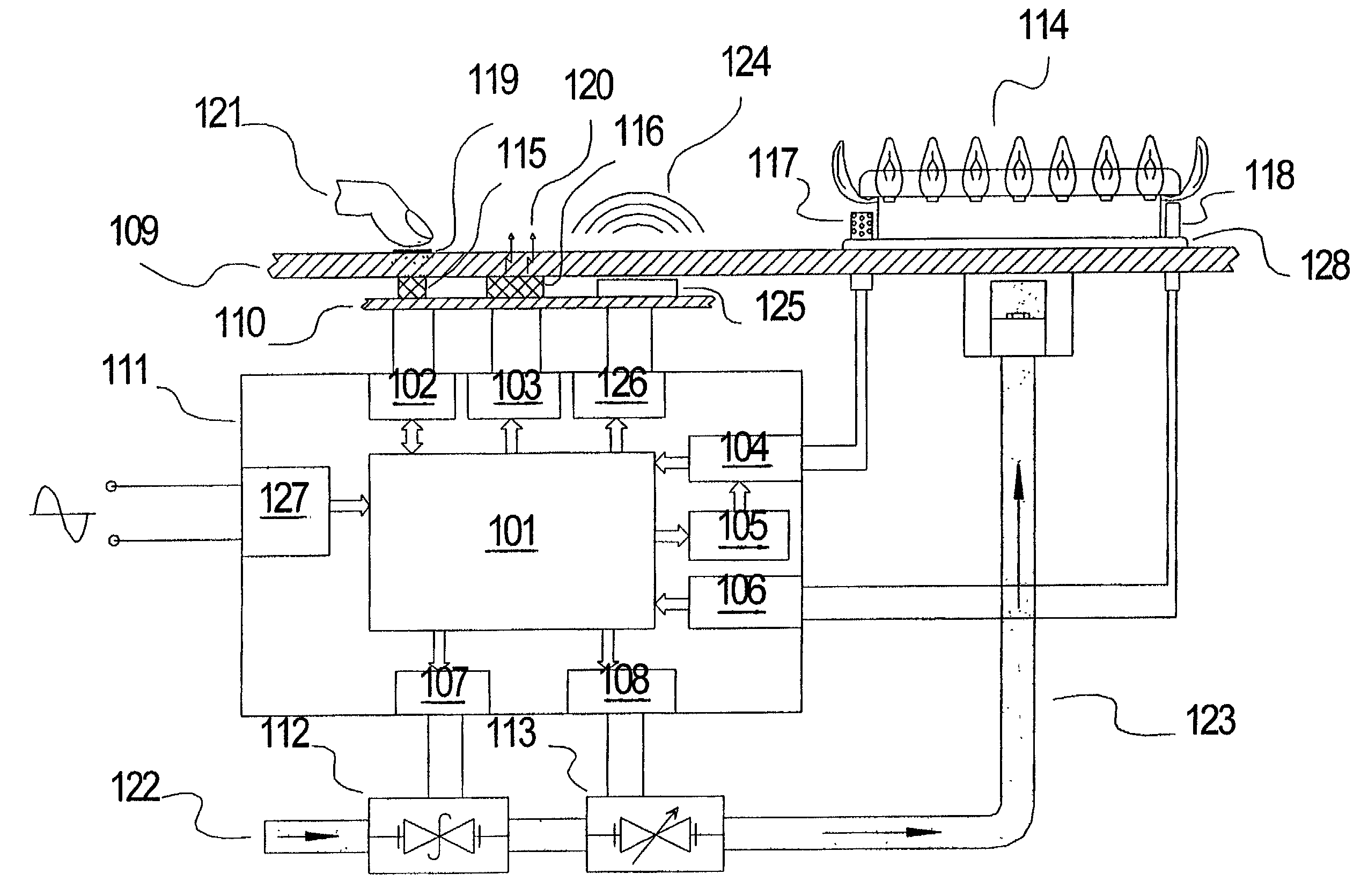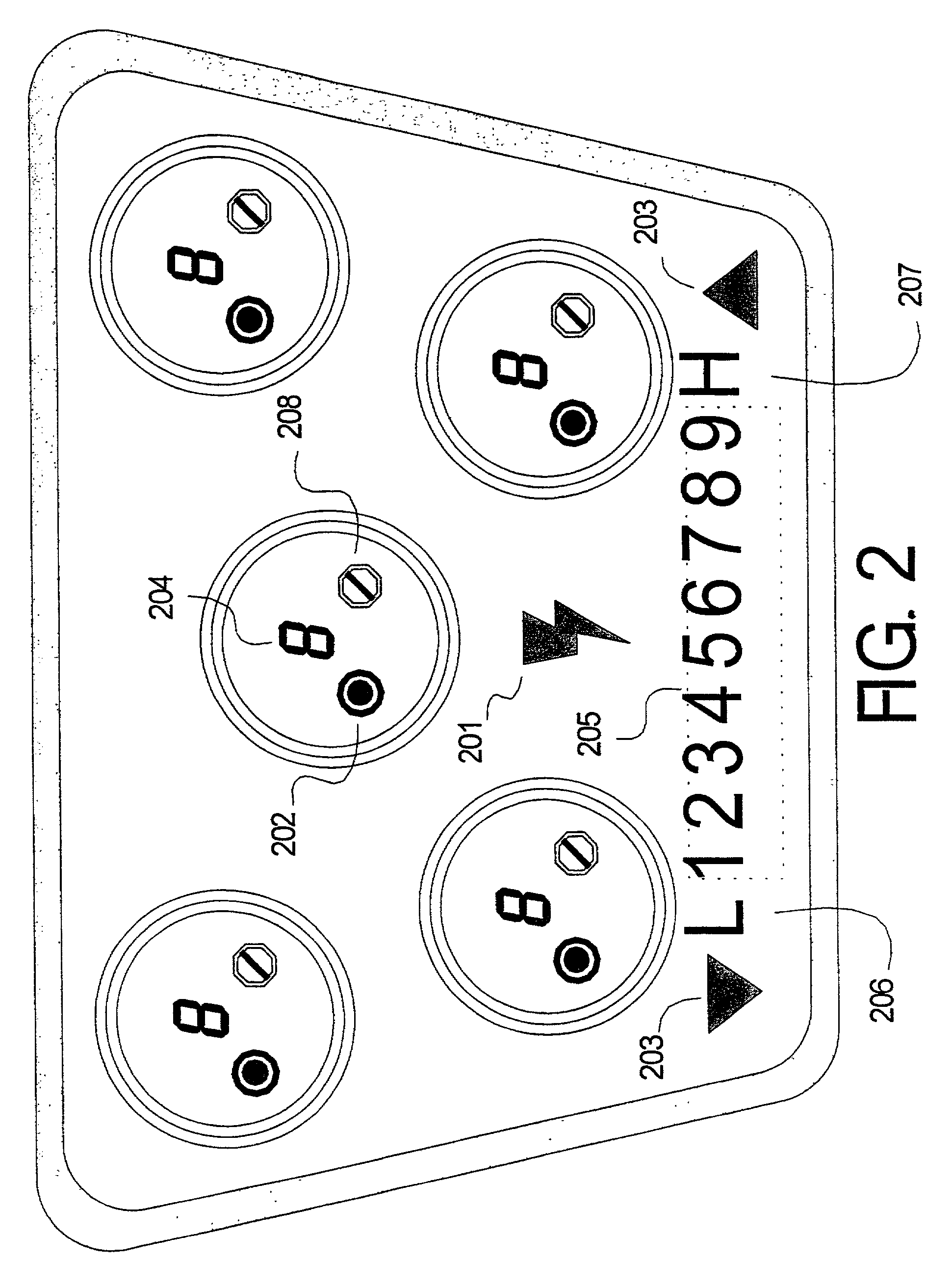Electronic gas cooktop control with simmer system and method thereof
a technology of electric cooking and electric control, which is applied in the direction of combustion control, domestic stoves or ranges, combustion failure safe, etc., can solve the problems of difficult user, difficult to maintain, and difficult to achieve repeatability, and achieve the effect of facilitating the maintenance of such surfaces
- Summary
- Abstract
- Description
- Claims
- Application Information
AI Technical Summary
Benefits of technology
Problems solved by technology
Method used
Image
Examples
Embodiment Construction
[0017]FIG. 1 is a basic block diagram of a cooktop system made in accordance with this invention. The cooktop shown in FIG. 1 has one or more gas burner(s) 114 placed on a ceramic glass panel 109; one electronically controlled in-line safety gas valve 112; one or more electronically controlled in-line modulating valve(s) 113; a gas line conduit 123 to conduct gas from the main gas supply to the burner(s) under control through the in-line valves; a user interface panel 110 preferably placed in registry with a silk-screened portion of a ceramic glass panel 109; one or more temperature sensor(s) 118; one or more hot-surface igniter(s) 117; and a controller 111 operative to control each of the gas valves in accordance with the user's selection entered at the user interface, the apparatus being controlled by a suitably programmed microcontroller 101.
[0018]The user interface panel 110, placed in registry with a silk-screened portion of a ceramic glass panel 109, preferably further include...
PUM
 Login to View More
Login to View More Abstract
Description
Claims
Application Information
 Login to View More
Login to View More - R&D
- Intellectual Property
- Life Sciences
- Materials
- Tech Scout
- Unparalleled Data Quality
- Higher Quality Content
- 60% Fewer Hallucinations
Browse by: Latest US Patents, China's latest patents, Technical Efficacy Thesaurus, Application Domain, Technology Topic, Popular Technical Reports.
© 2025 PatSnap. All rights reserved.Legal|Privacy policy|Modern Slavery Act Transparency Statement|Sitemap|About US| Contact US: help@patsnap.com



